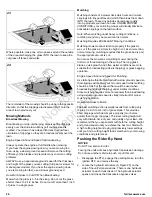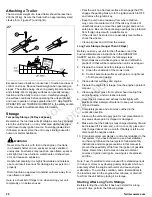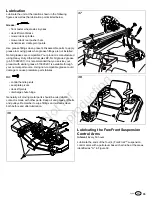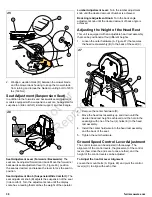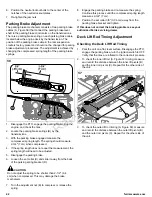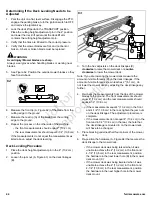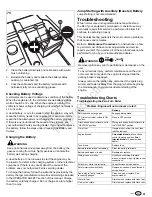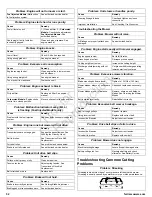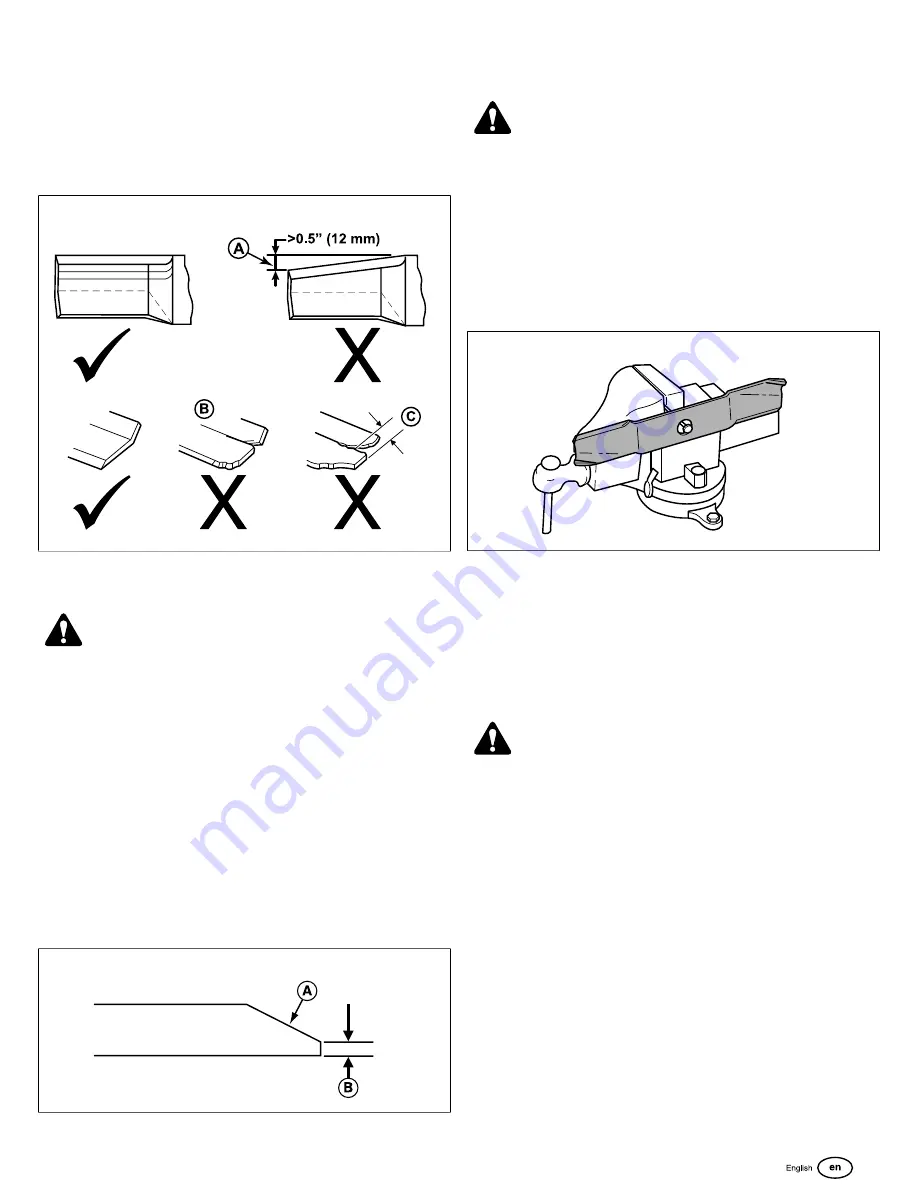
Not for
Reproduction
37
• More than .5" (12,7 mm) of the mower blade metal
has been removed from previous sharpening or wear
(A).
• The air lifts are excessively eroded (B) and the notch
(C) is .25" (6,35 mm) deep or greater.
• The mower blade is broken or bent.
42
4. If the cutting edges are not sharp or have nicks, sharpen
the blades.
WARNING
Thrown objects and fire hazard
Grinding mower blades throws sparks and fine metal
particles that are capable of igniting gasoline and gasoline
vapors, and that can injure unprotected eyes.
Be sure all flammable materials are cleared from the area
where grinding will occur.
Always wear safety glasses or goggles when grinding
mower blades.
5. Use a grinder, hand file, or electric blade sharpener to
sharpen the mower blades by removing an equal amount
of material from the cutting edge of each end of the blade.
6. Keep the original bevel (A, Figure 43) when grinding. DO
NOT change the mower blade bevel.
43
7. The mower blade should have a maximum of 1/64" (0,40
mm) cutting edge (B) or less.
CAUTION
Thrown objects hazard.
An unbalanced mower blade can create excessive vibration
and damage the unit, or cause mower blade failure resulting
in thrown debris.
Be sure blade is balanced before installing.
8. Clamp a nail in a bench vise, hang the blade on the nail,
and position the blade in a level horizontal position as
shown in Figure 44.
44
9. Check the balance of the blade. If either end of the
blade moves downward the end that moves downward
is heavier than the other. Sharpen the heavy end until
balance is achieved.
10. Repeat the process until the mower blade remains in the
horizontal, level position.
Installing the Mower Blades
CAUTION
Laceration hazard.
Mower blades are sharp.
Always wear gloves when handling, or working near, mower
blades.
1. Install each mower blade with the air lifts (C, Figure 45)
pointing up towards the mower deck as shown in Figure
45 and secure with the mower blade mounting bolt (A)
and flat washer (B).




